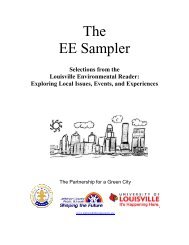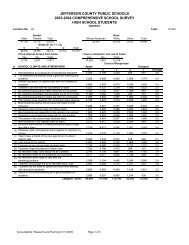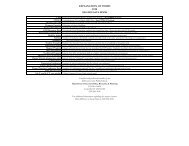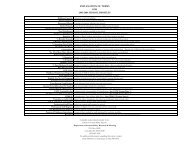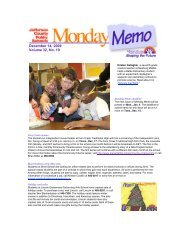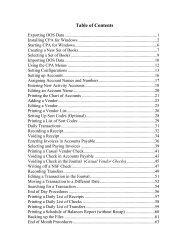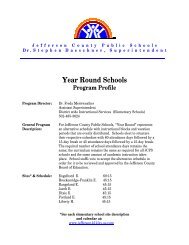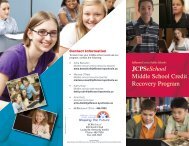Grade
Grade
Grade
Create successful ePaper yourself
Turn your PDF publications into a flip-book with our unique Google optimized e-Paper software.
9 th <strong>Grade</strong> Failures (January 7)<br />
1. What does the data tell us?<br />
The data tells us the number of student failures and the percentage of student failures by content area. It tells us that failures are higher in both<br />
mathematics and social studies. The number and percentages of failures are significantly lower in science and English/Language Arts. The data<br />
also tells us that English/Language Arts and science are on track to achieve their identified SMART goals. Mathematics and social studies are not<br />
on track to accomplish their identified SMART goals.<br />
2. What does the data not tell us?<br />
The data does not tell us the reasons for the student failures (i.e. poor attendance, lack of study skills, poor test taking skills, etc.). The data does<br />
tell us in what areas of the courses students struggled. The data does not tell us specifics that would guide teachers to make instructional<br />
adjustments.<br />
3. What are the causes for celebration?<br />
The number and percentage of student failures in English/Language Arts and science are significantly lower than last year. Both content areas are<br />
on track to meet their identified SMART goals and to see final failure numbers that are well below last year’s numbers.<br />
4. What are the Opportunities for Improvement?<br />
An opportunity for improvement is to lower the number and percentage of failures in mathematics and social studies. As it stands, both content<br />
areas are on pace to exceed the number and percentage of failures seen last year, which is unacceptable. Both content areas need to adjust<br />
instructional strategies in order to reduce the number and percentage of student failure and to achieve their identified SMART goals.<br />
5. What are our next steps?<br />
The first next step is to meet with the mathematics (Algebra 1) and social studies (Exploring Civics) teachers to discuss the data. This discussion<br />
will also be focused on reasons for the high number and percentage of student failures. Then, teachers will be engaged in discussing strategies that<br />
can be utilized to reduce the number and percentage of student failures in their content areas. Students will be engaged in report conferences,<br />
which give them an opportunity to voice reasons for their failures. This information will be taken back to the teachers so that strategies can be<br />
developed to address the indicated issues.<br />
36



